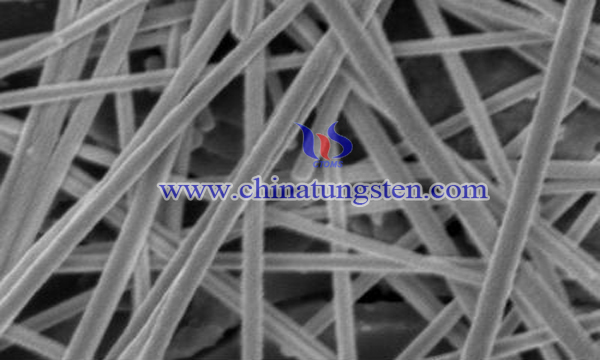Tungsten Oxide Nanowires Preparation by Low Temperature Hydrothermal Method
- Details
- Category: Tungsten Information
- Published on Tuesday, 08 October 2019 21:33
Tungsten oxide is a typical transition metal oxide with a band gap of 2.4-2.8eV. It belongs to a typical n-type semiconductor. Tungsten-based oxides not only act as catalysts, electrochromic, battery electrodes, solar energy absorbing materials and invisible materials, but also have the properties of pressure sensitive, thermal sensitive and gas sensitive semiconductor functional materials.

The traditional preparation process of tungsten oxide nanowires is complex and energy-intensive, and the experimental conditions of these methods are demanding. Some of them have hydrothermal temperature as high as 200 C and hydrothermal time as long as 24 hours or even longer. In the traditional hydrothermal method, the reaction vessel used is a high-pressure reactor lined with PTFE. The energy consumption of this equipment is very high.
In order to solve the above problems, some scholars have developed a low-temperature preparation process of tungsten oxide nanowires. The preparation steps are as follows:
0.01 mol/L Na2WO4·2H2O aqueous solution was prepared with 50 mL surfactant (NH4)2SO4 and 0.66 g added in the solution. Under the condition of magnetic stirring, concentrated hydrochloric acid was added to Na2WO4·2H2O solution at a rate of 0.1 ml/s, and the pH value of the solution was adjusted to 5, then dropping was stopped. The obtained mixed solution was transferred to sealed glass bottle and the drying chamber temperature was stable at 95 ℃. Glass bottles were placed in a constant temperature drying chamber for 3 hours, and the precipitates were washed twice with water and ethanol, then dried in an oven at 60 ℃ for 1 hour. The obtained tungsten oxide was nanowire structure with a diameter of about 10 nm and a length of 200-300 nm.
Compared with the existing preparation methods of tungsten oxide nanowire materials, the low-temperature hydrothermal method has the advantages of simple process, simple operation, ultra-low reaction temperature, shorter reaction period, simple requirements for equipment and simple use of ordinary glass container. Compared with the high-pressure reactor lined with PTFE, the energy consumption is lower and the cost is lower.
- Tungsten Oxide Manufacturer & Supplier, Chinatungsten Online: www.tungsten-oxide.com
- Tungsten News & Prices of China Tungsten Industry Association: www.ctia.com.cn
- Molybdenum News & Price: news.molybdenum.com.cn
- Tel.: 86 592 5129696; Fax: 86 592 5129797; Email: sales@chinatungsten.com



 sales@chinatungsten.com
sales@chinatungsten.com